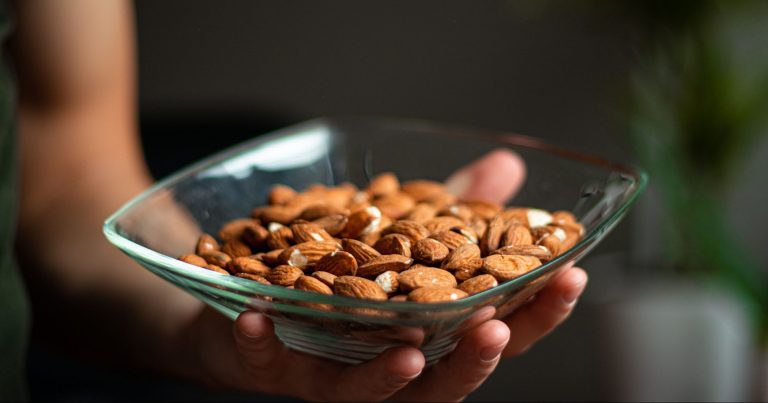Increase Protein – Best Way to Speed up Metabolism and Fat Loss
Metabolic rate is an important factor for fat loss. Faster metabolism means burning more calories at rest. How can protein assist with this? Well, it seems that protein has a higher thermogenic effect and supports muscle protein synthesis, two important factors that speed up metabolism.
Data shows that high-protein diets can lead to an increase in metabolic rate, along with promoting satiety and balancing hunger hormones – important for fat loss. Let’s discover why you may need more protein and a few hacks for a faster metabolism.
Increase Protein
Protein is a vital macronutrient that serves numerous functions in the body. Specifically, it’s involved in anabolic pathways like tissue repair and synthesis of certain hormones and enzymes.
Proteins are a sequence of amino acids vital for numerous physiological processes that play an important role in muscle regeneration but also support metabolic health. (1) (2)
The quality and quantity of proteins directly affect muscle protein synthesis. This is important as protein reduces muscle breakdown, leading to a more favorable ratio of lean mass to fat mass. (3)
High protein diets have been one of the main areas in nutrition research, offering valuable insight into fat loss and metabolic health. As science progresses, more and more studies show the importance of protein was understated by early research.
Metabolism – What is it?
Metabolism is how your body creates energy from the food you eat. It is the sum of reactions that occur in each cell of the body that helps you produce energy [ATP]. (4)
Metabolic rate is determined by energy expenditure. How many calories we burn during rest [or activity] varies greatly between individuals. While some people can afford to eat more and maintain their body weight, others find it hard.
In the context of fitness, we split metabolism into fast or slow. Those with a fast metabolism burn more calories, allowing them to eat more. Those with a slow metabolism burn fewer calories at rest, so weight loss is more challenging.
It’s quantified through something called metabolic rate. The higher the metabolic rate the faster one’s metabolism.
Metabolism is affected by numerous things like fidgeting, diet, sleep, and temperature. So how can high protein diets affect metabolic rate exactly? Well, let’s dive into what a thermogenic effect of food is.

Thermogenic effect of food
After ingesting food, the body burns calories to utilize this food and turn it into energy. (5) This is metabolism, literally. Different macronutrients burn different amounts of calories. The heat released throughout this process describes the thermogenic effect of food.
Research suggests that protein has a higher thermogenic effect burning around 20 to 30% of the energy content, compared to carbohydrates [5-10%] and fat [1-3%]. Simply put, you burn more calories digesting protein than fat or carbs. (6) (7)
Another systematic review showed that higher protein intake increases thermogenesis and induces satiety compared to lower protein intake. This is one of the mechanisms that high-protein diets can lead to an increase in weight loss and fat loss. (8)
pro tip
One way to slightly increase metabolic rate is by increasing the intake of high-protein foods like chicken, salmon, tofu, or eggs. The at first trivial increase in energy expenditure can accumulate over time to lead to sustainable weight loss.
Metabolic Activity & Muscle Mass
Another thing we need to understand is metabolic activity. This is directly linked to what we call metabolic rate.
It seems that those with higher lean muscle mass burn more calories at rest being so-called more metabolically active. This is because of the fact that lipids or fat burn way fewer calories at rest compared to muscle.
- 1 lb of fat burns ∼2-3 calories daily
- 1 lb of muscle burns ∼7-10 calories daily
This puts the leaner person, or the one with greater muscle-to-fat ratio at a more favorable level in terms of metabolic activity. Fat-free mass of FFM is one of the major predictors of resting metabolic rate. Studies show that strength training [which increased FFM] leads to a ~5% increase in RMR. (9)
This is important as [s]low metabolism increases the risk of weight gain and diabetes, being one of the factors contributing to obesity. (10)
Additionally, skeletal muscle is the major machine that takes glucose for fuel. This links higher muscle mass to lower blood sugar spikes, as muscles can take more of this glucose to store it [as glycogen] for energy. (11) (12)
This ties directly to the theory that loss of skeletal muscle and accumulation of intramuscular fat can increase metabolic dysfunction, increasing the risk of metabolic syndrome. (13)
Conclusion
Greater lean muscle mass correlates to a higher metabolic rate. Muscle, as more metabolically active tissue burns more calories at rest which makes fat loss easier.

Satiety, Hunger and GLP-1
Another important factor for those accelerating metabolism to promote fat loss is satiety. Increased food intake, which tips the scale to a positive energy balance or caloric surplus will lead to weight gain.
Protein has been shown to increase satiety levels, thus decreasing hunger. High-protein meals lead to greater satiety and weight loss compared to lower protein intake. (14)
One study shows greater fullness with 30% protein compared to 10%. Although the thermogenic effect of food [TEF] wasn’t significant, higher protein levels reduced cholesterol, triacylglycerol, and APO-B. (15)
Besides the thermogenic effect and satiety-promoting effects of protein, it has been shown to (16)
- increase GLP-1 levels, a satiety-promoting hormone
- decrease ghrelin levels, a hunger-stimulating hormone
Conclusion
Protein is effective at making one feel fuller. The increase in satiety hormones and reduction in hunger hormones can lead to weight loss and better diet choices. (17)
Carb-Centric vs. Balanced Meal
As a broad takeaway, let’s compare a carb-heavy meal versus a meal that has a balanced plate of carbs, fats, and protein.
- A big bowl of rice – Contains a lot of carbohydrates, specifically simple carbohydrates or glucose. This can lead to unfavorable spikes and drops in both blood sugar levels and insulin levels. Additionally, satiety doesn’t last long so hunger shows up way faster.
- Bowl of [1/3] rice, steak and avocado. This composition contains a higher amount of protein and fat, which will inherently increase satiety. Lower hunger cravings, higher thermogenic effect of food, and lower blood sugar spikes all lead to a healthier metabolic response.
Conclusion
Add some protein and fats to your meal. This can slow down digestion, it can increase metabolic rate, and lead to a better metabolic response. It can contribute to greater hunger hormone balance and glycemic control.

Glycemic Control & Diabetes
Suppose we set a limit to 700 calories per meal. That meal can be comprised of carbs, fats, or protein. Or any ratio of the aforementioned. It seems that a higher ratio of protein to carbohydrates trends toward better metabolic health.
The main problem in metabolic syndrome is energy deficits. Insulin isn’t effective at recognizing and transporting glucose, thus sharp drops and spikes occur frequently. This increases inflammation while energy-creation is disrupted. Therefore, regaining a solid balance of the insulin-glucose pathways is key to enhancing metabolic health.
Research shows that high protein diet can improve glycemic control and reduce insulin resistance risk. (18) (19)
In one review examining 13 studies with 1138 T2DM patients, a high protein diet wasn’t effective at improving glycemic control. However, it improved lipid profiles and reduced insulin resistance risk. (20)
High protein diets can modulate insulin levels directly, by the amino acids [products of protein digestion]. This activates certain receptors and nutrient transporters that increase satiety. (21)
Conclusion
Overall, it seems that adding protein to one’s plate can improve glycemic control and metabolic health.
How much protein is enough
Now to the real question, how much protein is enough?
It seems that most American adults consume around 14-16% of their total energy as protein. This is roughly about 1-1.5 g/kg/day, higher than the recommended dose. (22)
We know that low levels of protein can cause numerous dysfunctions and impair immunity. This promotes catabolism, increasing muscle and bone density loss.
The current RDA for healthy adults is estimated at around (23)
- 0.8 g protein per kg/BW per day (minimal activity)
However, for those looking to increase or maintain physical strength via training, the doses are slightly higher
- 1.0 g protein per kg/BW per day (minimal activity)
- 1.3 g protein per kg/BW per day (moderate activity)
- 1.6 g protein per kg/BW per day (intense activity)
Fun Fact: While there are a lot of different sources citing different numbers, the general outlook is that the sufficient protein intake to support muscle anabolism with training hovers at around 1.2-1.5 g of protein per kg/BW.
Protein intake of below 0.5 is in many cases insufficient to support muscle maintenance and anabolism, potentially putting the individual at a risk of muscle degradation.
Also, low protein intake leads to greater hunger which drives the desire to eat higher. (24)
Plant-based vs. Animal Protein
Protein bioavailability, or in essence, how much of the protein we consume we can effectively use [for anabolic purposes] is another important factor. Optimally, complete proteins with full amino acid composition would be greater at inducing muscle protein synthesis.
For this reason, animal protein is considered more complete, due to the higher amino acid content. There’s also a greater trend of muscle protein synthesis with animal protein, compared to fat. (25)
So if plant-based protein is the only option, one approach to consider is adding different sources of proteins that would provide a fuller spectrum of amino acids.
Boost Metabolism – 4 Tips
Are you ready to rev up your metabolism and kick your weight loss goals into high gear? Incorporating more protein into your diet is a simple and effective way to boost your metabolism and support your journey to a healthier, happier you. Here are a few tips to help you increase your protein intake and speed up your metabolism:
Snack smart
Protein Dominance
Condiments
Protein Shake
Instead of reaching for a bag of chips or a sugary treat, opt for a protein-packed snack to keep your metabolism humming. Some tasty options include a handful of nuts, a hard-boiled egg, or a slice of turkey wrapped around a piece of cheese.
Make protein the star of your meals: Rather than considering protein an afterthought, make it the main event at every meal. Choose protein-rich options like chicken, beef, salmon, tofu, eggs, or beans as the centerpiece of your plate, and pair them with plenty of colorful vegetables for added nutrients.
Protein-rich condiments: Don’t underestimate the power of a protein-packed condiment. Opt for hummus, guacamole, or tahini on your sandwiches and wraps for a tasty and satisfying protein boost.
The most convenient way to add protein is by supplementing it. When choosing, opt for a version that has a minimum of 3g of Leucine, as the main amino acid that supports MPS.
By following these simple tips, you can increase your protein intake and boost your metabolism to support your weight loss journey. Happy snacking!
pro tip
Consider preparing homemade protein bars as a healthy snack. Cacao, grass-fed butter, nuts, protein, oats, and milk are all you need. It’s a convenient, practical high-protein snack to curb cravings when in a rush.
Conclusion
- Protein is a vital macronutrient involved in muscle protein synthesis. It supports numerous physiological functions and creates the structure of many cells in the body.
- Metabolism is the way the body converts food to energy. A fast metabolism means one has a higher metabolic rate, thus burning more calories at rest.
- Protein is an important factor of metabolism, as it has a higher thermogenic effect which leads to a slight increase in metabolic rate.
- High-protein diets have shown the potential to improve glycemic control, promote satiety, and improve body composition. All three of these are important for fat loss.
- The standard RDA for healthy adults stands at 0.8 g per kg/BW. Protein intake demands are greater in those training to improve physical strength, ranging from 1-1.5 g per kg/BW.








